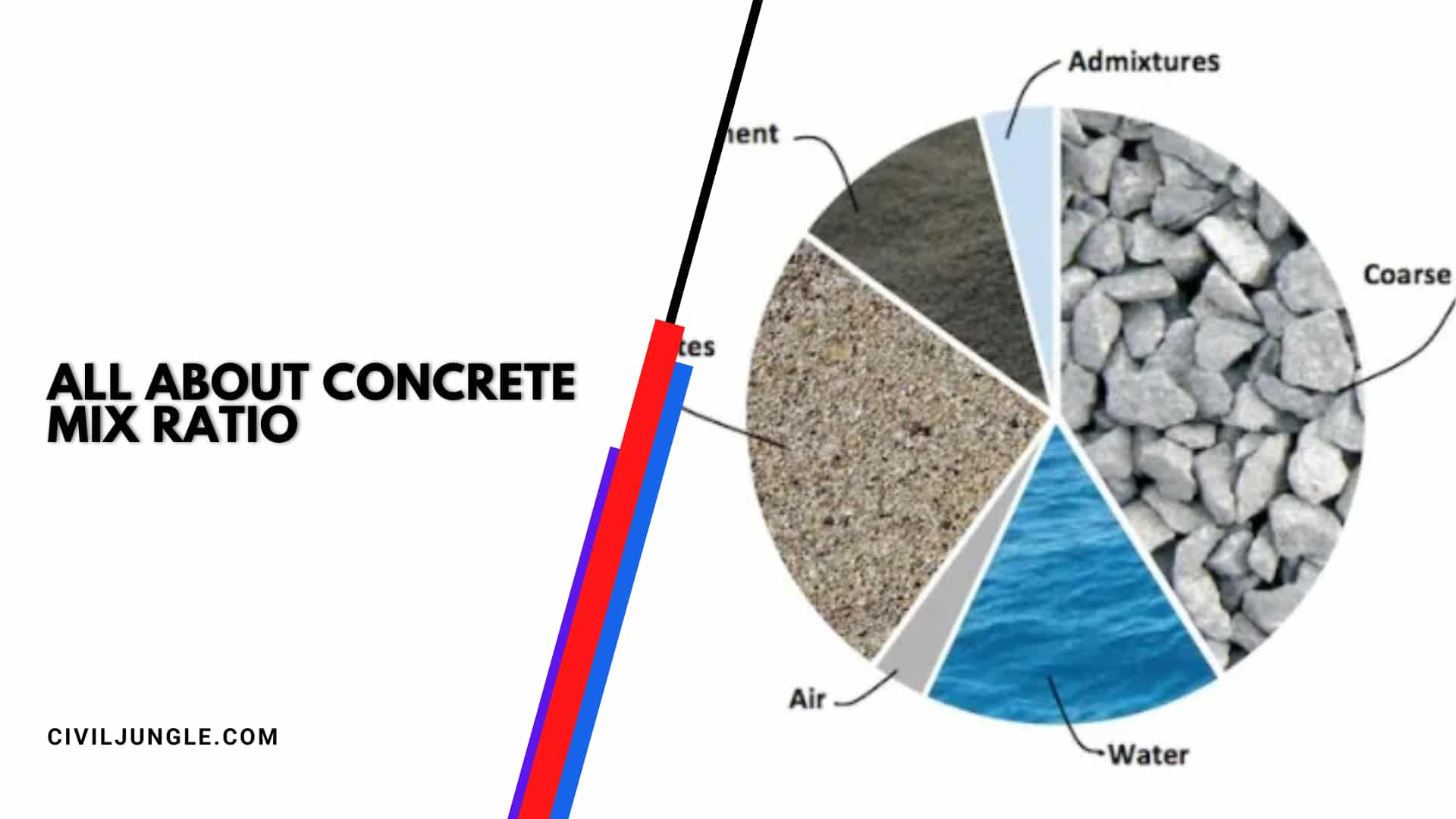
The Best Concrete Mix Ratio
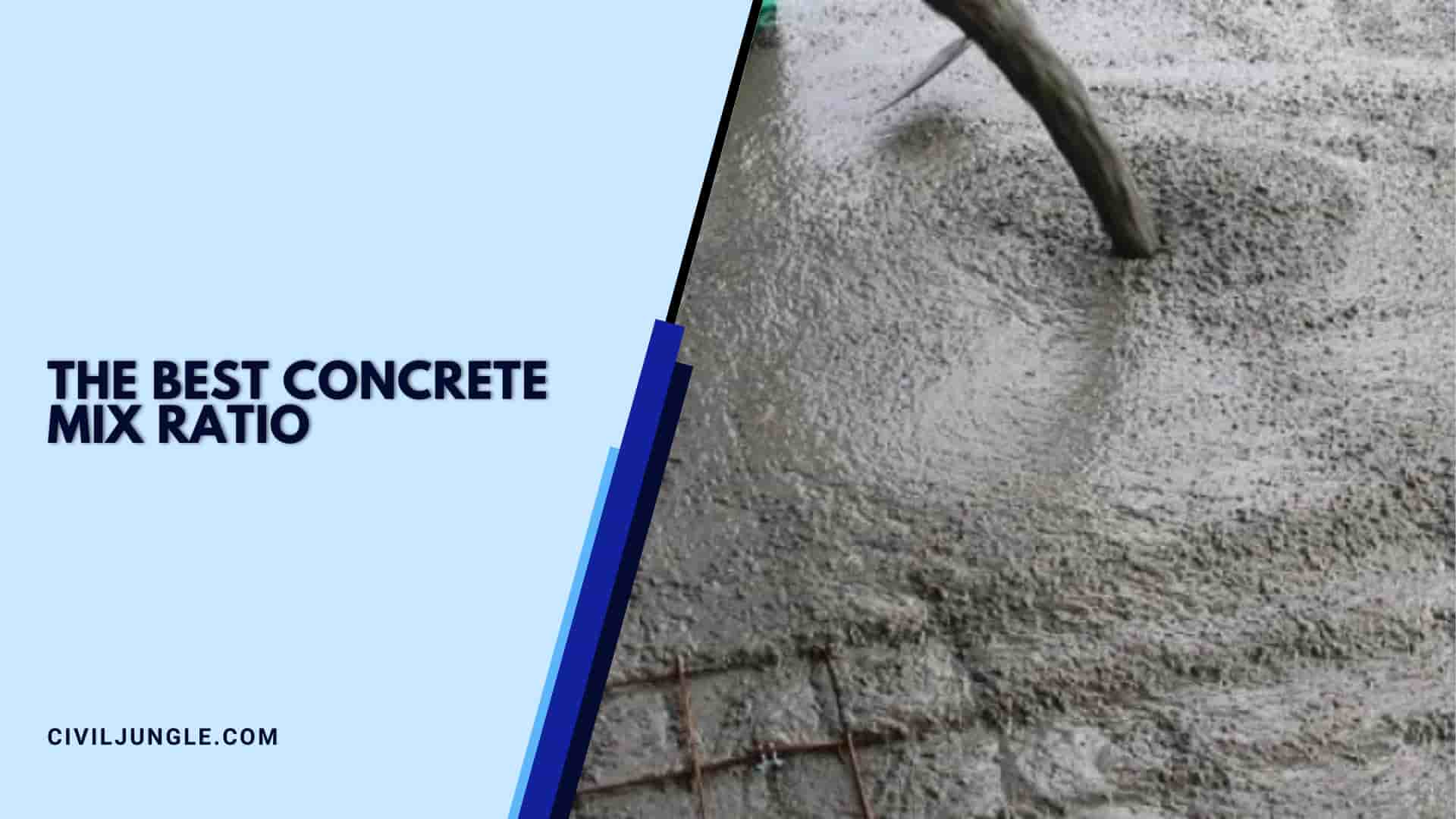
It is one of the world’s most versatile and widely used building materials. It is strong, durable, long-lasting, and surprisingly cost-effective.
Concrete is the most important building material used in construction industries for building houses, low-rise buildings, high-rise buildings, commercial buildings, office buildings, apartments, industrial buildings, bridges, dams, channels, retaining walls, and water bodies.
We can only imagine buildings with concrete. And you can make concrete from natural materials found almost anywhere on Earth. Masons have used that for many years to build some nice structures. Small patios and countertops of the large dams and buildings are all concrete.
The safest formula for any concrete mix is four-two-one(1:2:4): four parts crushed stone, two parts sand, and one part cement. Concrete mix proportioning is the process of ascertaining the proportion of each other concrete component to obtain the desired quality and property.
As we know, concrete combines essential ingredients like cement, sand, aggregate, and water. In addition to these ingredients, chemical admixtures are added when concrete requires special properties.
Using the correct concrete intermix ratio is important to create a strong concrete mix period for your concrete. Some basic mix ratios for concrete are 1:2:3, 1:3:3, and 1:2:4. These are based on the cement : sand : stone in that order.
You will need four basic components to make it compact.
- Portland Cement – You can buy this in 94lb bags
- Sand – coarse or fine will work and give you a firmer mix.
- Coarse – stone You can use 3/8″, 1/2″, or 1/5″ stone for aggregates.
- Water – Clear, cool water is best.
The Concrete Mixing Ratio Chart
| Compressive strength | Mixing Ratio Cement: Sand: stone |
Generally used for
|
| 2500 psi. | 1:02:04 |
Small slabs, fence posts
|
| 3000 psi. | 1:03:03 |
Slabs, floors, walls, footings
|
| 3500 psi. | 1:2.5:3 |
Patios walks, slabs
|
| 4000 psi. | 1:02:03 |
Driveways, exterior slabs
|
| 4500 psi. | 1:02:02 |
Commercial floors & slabs,
|
Listed above, are some of the standard concrete mix ratios used in the U.S.
Concrete Mixing Ratio Chart For Various Grades Of Concrete
| Grade of the concrete | Mixing Ratio Cement: sand: stone |
Compressive strength in N/mm2
|
| M5 | 1:05:10 | 5Mpa |
| M7.5 | 1:04:08 | 7.5Mpa |
| M10 | 1:03:06 | 10Mpa |
| M15 | 1:02:04 | 15Mpa |
| M20 | 1:02:02 | 20Mpa |
| M25 | 1:01:02 | 25Mpa |
Some official concrete mix proportions are listed for the comfort of the world. When mixing the strongest concrete, the best concrete mix ratio is one part of cement, two parts sand, three-part gravel, and half water. The mixing ratios are decided based on construction and materials assorted into the designs.
There are two types of concrete:
- Plain Cement Concrete, also known as PCC, is made of a mixture of cement and water in definite and required proportions with desired strength.
- Reinforced Cement Concrete, also known as RCC, is plain cement concrete provided with steel reinforcement and rain-based cement concrete.
Some Relate “Wall” Article Are as follows.
- Frost Wall
- Pony Wall
- Cmu Wall
- Parapet Wall
- What Is Drywall
- Wall Paint Finishes
- Sand Concrete Walls
- Gabion Wall Cost
- What Is a Shear Wall
- Types of Partition Wall
- Alternatives to Drywall
- How to Find Wall load
- Mount TV on Brick Wall
- M30 Concrete Mix Ratio
- Disadvantages of Wall Putty
- Weep Holes in Retaining Wall
- Pros and Cons of Sealing Brick
- Bathroom Half Wall Panels
- Long Wall Short Wall Method
- Cost to Repair Drywall Ceiling Water Damage
- How to Cover Concrete Walls in Basement
How Concrete Is Made?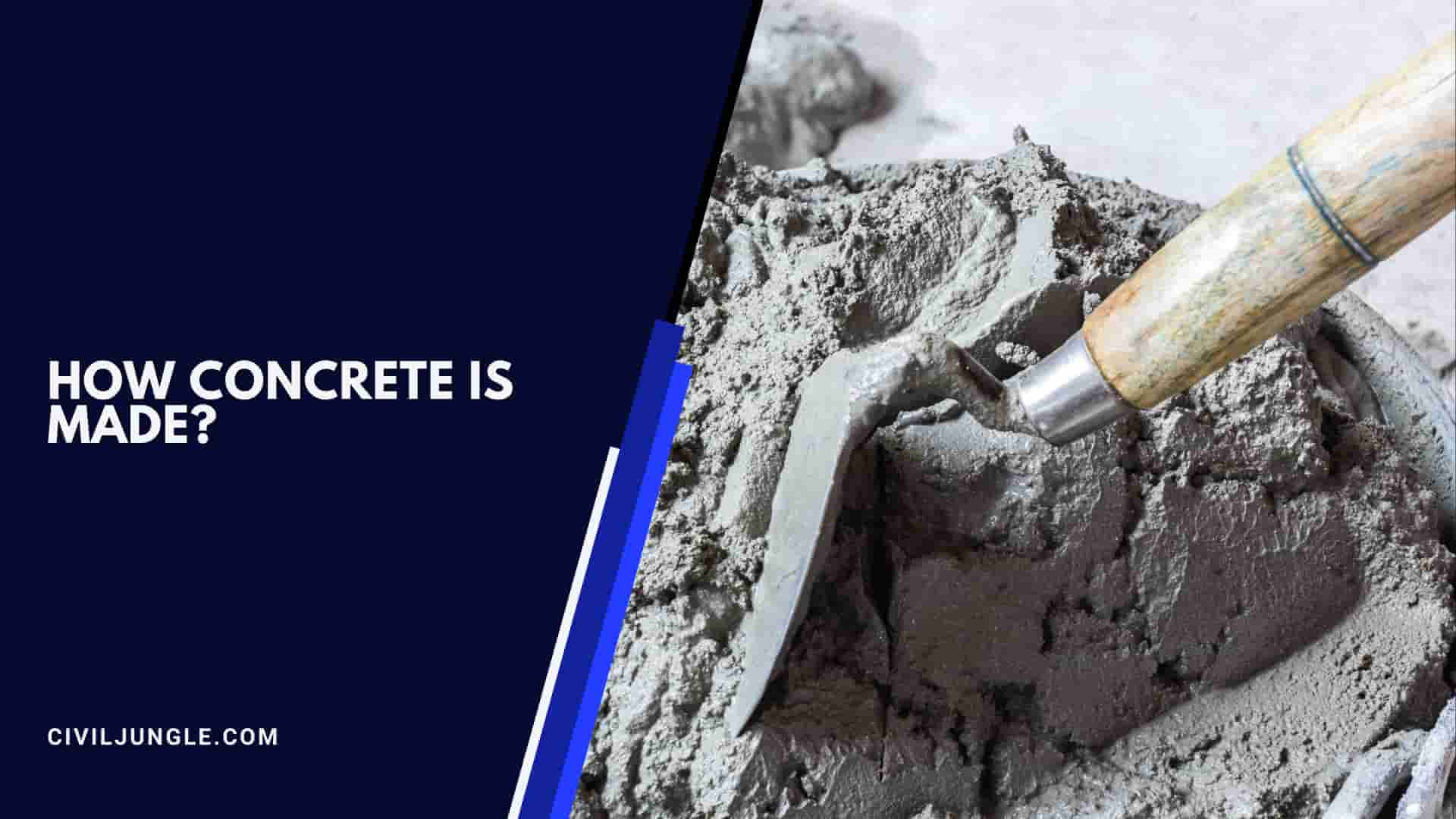
The concrete is made by mixing Portland cement with water to form a paste that coats the aggregates, bonds, and takes on a zing when it hardens.
Cement mixed with water is a mixture of concrete, stone, and sand. Cement is a gray powder that, while mixed with water, forms a glue to bind other ingredients together.
A chemical cross action called hydration causes the cement paste to harden and bonus energy, forming the rock-like material known as concrete. The fluid mix of concrete is cement, water, sand, and gravel. The commonly used cement is Portland cement.
Concrete making is a chemical reaction that transforms unconsolidated ingredients into brand-new materials. Cement is a component of concrete. Concrete consists of four components: Fine aggregate(sand), coarse aggregate, water, and admixture Portland cement.
A by-product of steelmaking, ground-granulated blast furnace slag (GGBS) is used as a substitute for this cement in some mixtures. Concrete is molded into almost any shape when wet. After this, it becomes difficult to maintain its shape, whatever form it is molded.
Concrete is made up of different ingredients that have different functions. Concrete mainly depends on the mixture of concrete ingredients: cement, coarse aggregate, fine aggregate (sand), and water. Materials such as admixtures, pigments, fibers, and polymers can also be used as concrete reinforcement.
Concrete is the most common construction material used in the world. Concrete is made by mixing paste and rocks. This material is used in construction, from small domestic structures to large industrial sites.
Also Read: Cement Plaster Mix
Concrete Mix Ratio of Ingredients
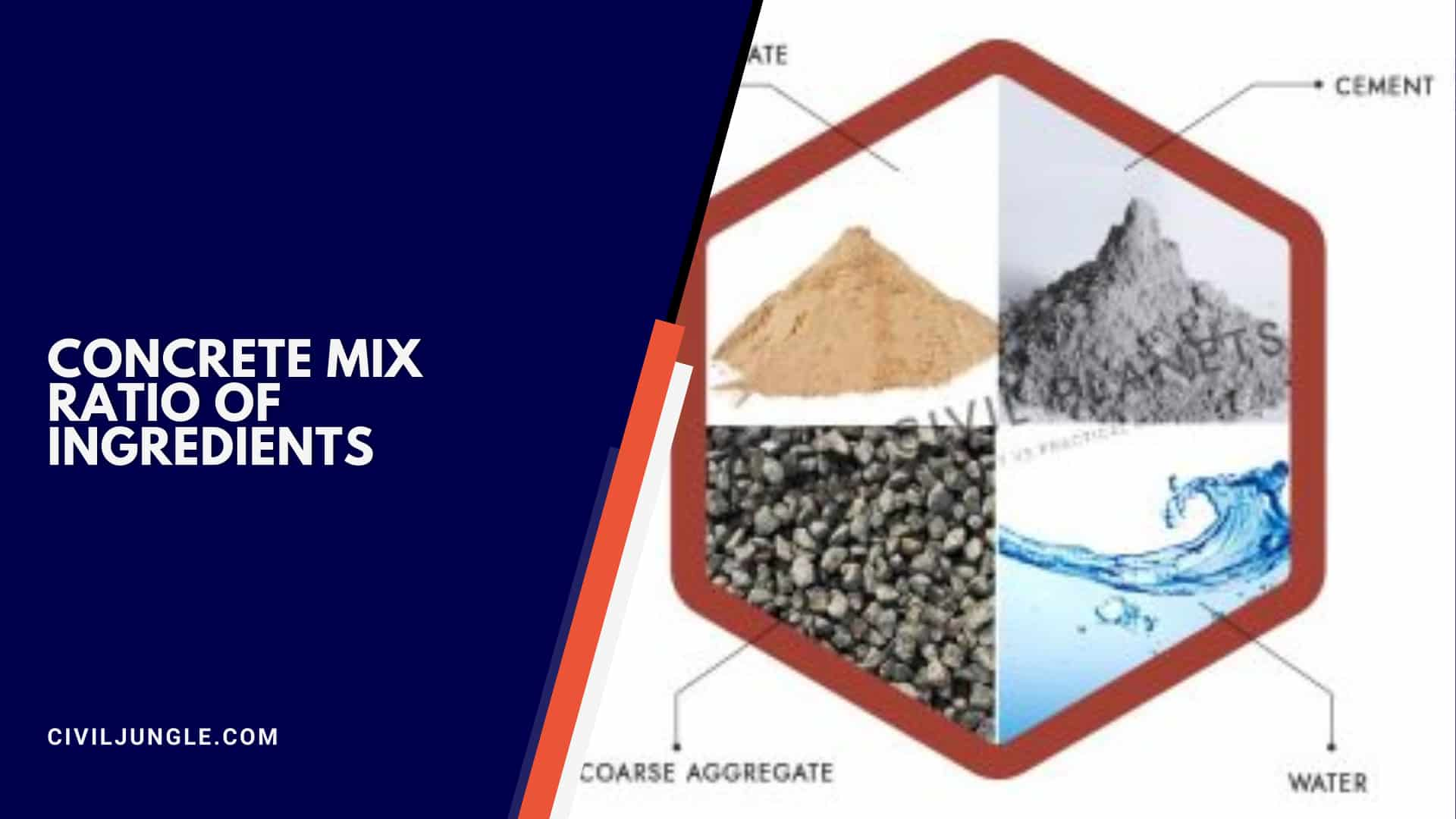
Concrete combines cement, air, water, sand, and gravel. It’s just not right. The concrete mix also contains 10% cement, 20% air and water, 30% sand, and 40% gravel. And there are only four fundamental ingredients in concrete: cement, aggregate, sand, and water, but each other serves a particular purpose.
Concrete mix ratio is the process of finding the exact proportion of each concrete component to achieve the desired quality and properties of the concrete.
Components Concrete is the most widely used man-made material on earth. It consists of four primary ingredients to make each concrete mix.
The concrete ingredients must be properly classified and proportioned to build an economical mix and meet the minimum functionality, safety, and financial requirements. That profit-driven company will skimp on that one ingredient because it costs the most.
The process of concrete of making involves the following ingredients of the concrete.
- Coarse aggregate
- Fine aggregate
- Cement
- Admixtures
- Water
What’s The Best Concrete Mix Ratio?
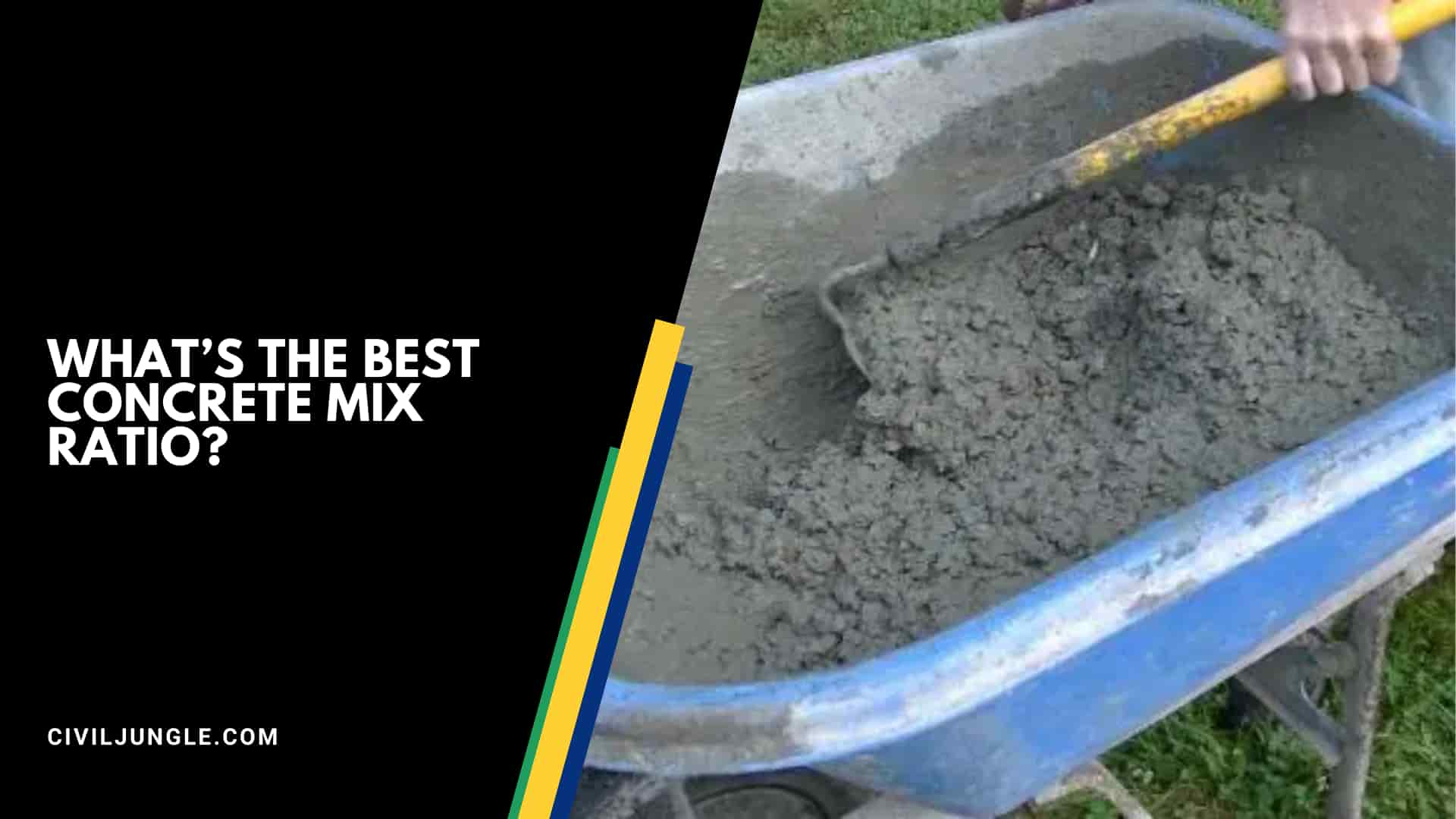
The best concrete mix ratio in residential projects is 1:2:5:3. Using the correct concrete mix ratio is important to create a hard, long-lasting concrete mix. And to make that concrete, you’ll need four basic ingredients: cement, sand, aggregate, and ad-mix.
A concrete mix ratio is fairly straightforward when you get down to it. The mixed cement ratio determines that the more Portland cement you add, the stronger your concrete will be. Ratio the amount of Portland cement to the aggregate of your concrete. Higher water-to-cement ratios will result In a harder and weaker product.
A concrete mix ratio is expressed by a set of numbers separated by colons with a 1:2:3 ratio. Concrete mixed in this proportion is known as a C20 mix and is suitable for garden paths, concreting fence posts, shallow retaining wall foundations, and extension of the bases. Additives can also give special concrete characteristics such as strength, faster set time, and flexibility.
To make that 3500 psi concrete, you will need four basic ingredients:
- Cement: Using the Portland brand in cement is good.
- Sand: Coarse sand makes for stringier concrete, but finer sand gives you a smoother finish.
- Overall Stonetone: Uses 1/2″ to 1″ smooth wash stone.
- Water: Cold water should be used. And If it’s safe to drink, it’s good for making concrete.
How To Create The Concrete Mix Ratio?

The measurement must convert the raw material into a dry concrete mix. They put the material into a cement mixer, wheelbarrow, or tray and mix it dry. After mixing the ingredients thoroughly, water is added to make the concrete.
Regarding concrete proportions, it depends on what strength you are trying to achieve, but as a general guideline, a concrete mix will be 1 part cement to 2 parts sand to 4 parts aggregate. A mixture of 1 part cement to 3 parts sand and six parts aggregate is used for the foundation.
A great way to measure dry concrete ingredients is with a 5-gallon bucket. To make it a 1:2.5:3 concrete mix ratio, add one bucket of cement, 2 1/2 buckets of sand, and three buckets of stone. Throw these ingredients into a mixer, tray, or wheelbarrow and start mixing.
A more accurate method is to use buckets to measure concrete content. It takes a long time. A good mason can tell whether the concrete is good by looking at it and touching it. We must use a bucket to get the feel of it. That’s why most masons use a shovel.
Adjusting The Concrete Mix Ratio

Adjusting the strength of the concrete mix is very easy. Replacing the sand affects the overall concrete mix proportions. The strength range for that concrete is between 3000 and 5000 psi.
The varying sand you use increases or decreases the amount of stone and cement in the mix. Cement is always 1 part, and stone is always three parts. By changing the level of sand, you change the strength of the concrete.
The most commonly used concrete mix ratio is the strength of concrete.
- The concrete mix ratio of the 4000 psi concrete is 1:2:3. One part of cement, two parts of sand, and three parts of stone.
- The concrete mix ratio of the 3000 psi concrete is 1:3:3. One part of cement, three parts of sand, and three parts of stone.
- The concrete mix ratio of the 4500 psi concrete is 1:1.5:3. One part of the cement, 1 1/2 parts of sand, and three parts of pumice stone.
- The concrete mix ratio of the 3500 psi concrete is 1:2.5:3. One part of the cement, 2 1/2 parts of sand, and three parts of the rock.
Changing the level of sand changes the proportions of the concrete mix, thereby changing the strength of the concrete.
What’s The Best Concrete Mix Ratio For A Slab?
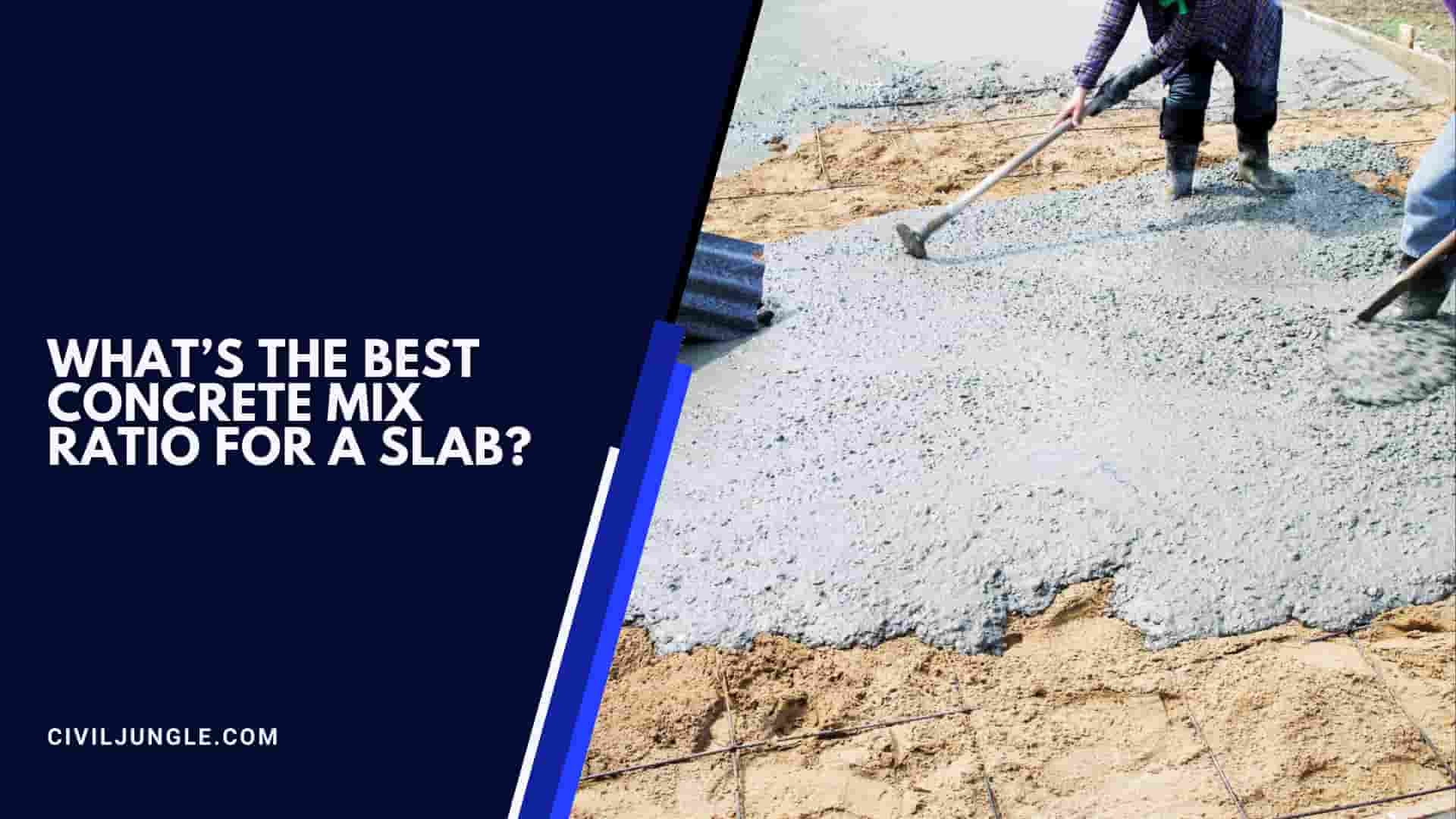
The best concrete mix ratio for the slab is 1:3:3 (cement: sand: stone), creating a concrete mix of about 3000 psi. Most concrete works well for footings, steps, patios, and foundation walls, but the mix ratio is in the offing for shed slabs. The optimum concrete strength in psi used for slabs is between 3000 psi to 4000 psi.
A ratio of 1:2:4 of cement, sand, and coarse aggregate is taken for making concrete slab. To make an ideal slab, set the concrete mix within half an hour of the mixing. The patios are usually poured with weaker concrete.
How Do You Calculate A Smaller Concrete Mix Ratio?
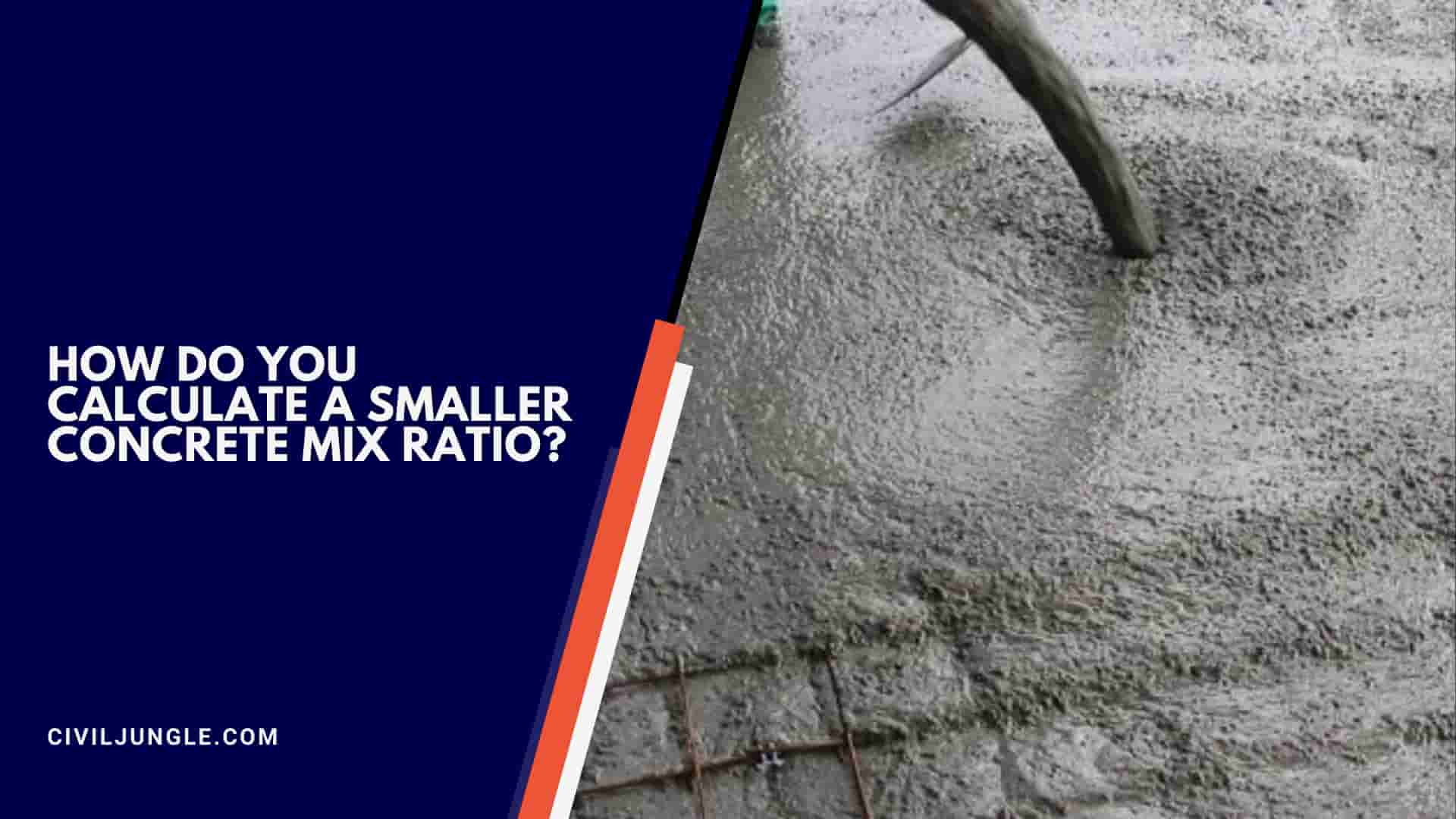
Using a calculator, you can obtain a shortened concrete mix ratio to calculate the cost of C10, C15, C20, C25, C30, C35, C40, and other common admixtures.
Having less than a cubic meter of concrete with hardware tools. You mix an electric concrete mixer or by hand. To produce smaller concrete batches, you should use the same proportions.
For example, to mix the quantity mentioned earlier, you will need one bucket of cement, three scoops of sand, three dippers of stone, and half a bucket of water. Thus, for any size batch, it is important to ensure that the proportions of the ingredients are the same.
What Is The Strongest Concrete Mix Ratio?

Cement is one of the most important ingredients for strengthening the concrete mix. Cement is also responsible for binding sand, gravel, and water together.
Reinforced concrete should be mixed in a ratio of 1:2:3:0.5 to obtain maximum strength, such as 1 part cement, two parts sand, three parts gravel, and 0.5 part water. The strongest concrete mix ratio for that house at 5000 psi is 1:1:3.
Which is made up of 1 part cement, 1 part sand, and three parts stone. If you need more power than the standard 3500 PSI mixture, try the 4000 or 4500.
It is harder than 3500 and easier than 5000 concrete and provides the perfect blend of balance, strength, and functionality during construction to create a high-quality finished product.
Portland cement is also available for special purposes, but recently engineering specifications and concrete technology have evolved so that changes during curing may alter the production of special cement blocks for high-strength requirements.
How Do You Make Strong Concrete?
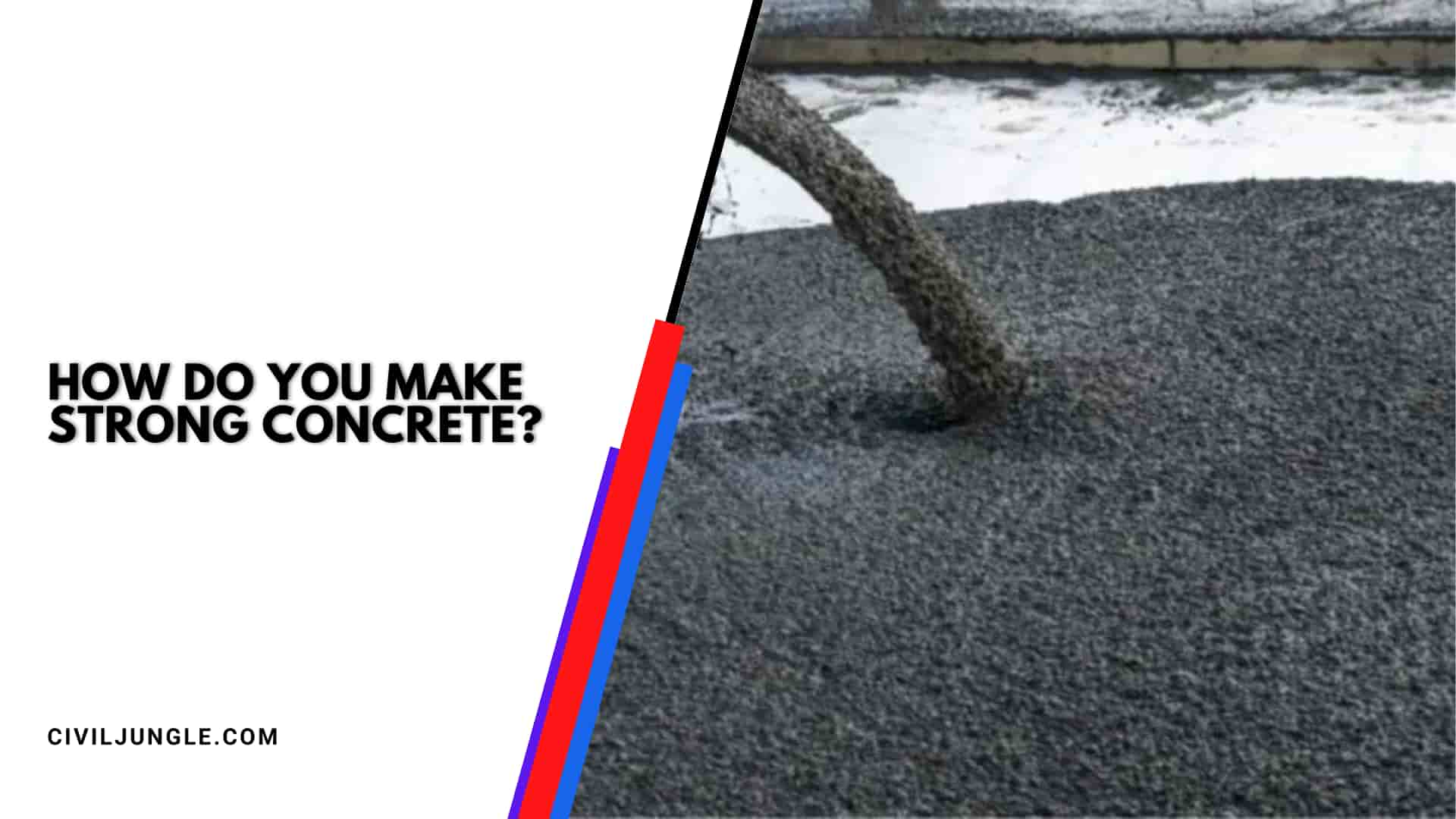
Add more cement or less sand to strengthen the concrete. Due to this, the rating will be as strong. And these principles also work in opposite directions.
A few key factors are important to make that strong concrete.
- Ingredients: These include coarse or fine sand, ¼” to 1” washed cobbles, cement, and fresh water.
- Ratio: Correct concrete mix ratio is important if you want to mix strong concrete.
- Water: Using too much or too little water can weaken the concrete. And you need water to activate all that cement.
- Mixing: The ingredients must be properly and thoroughly wet and dry. If you get sand, stone, or cement flakes, it will create weak concrete areas.
- Curing: Once the concrete is mixed, it cures. Too broad a topic to go into here, but I’ll link to another article that describes how to cure concrete.
Concrete Mix Ratio For A Foundation

A mixture of 1 part cement to 3 parts sand and six parts are used for the foundation. You should measure about half of the cement, sand, and aggregate you are mixing. The concrete mixes are strong, durable, and easy to work with.
When pouring that concrete foundation, you have to concrete the concrete mix. It is easy enough to vibrate all the air from the 3500 mixtures. And it minimizes the voids that create a strong foundation.
The Best Concrete Mix Ratio For A Floor

The best concrete mix ratio for floors is the safest state for any concrete mix: four-to-two-one. Four parts rock, two parts sand, and one part cement.
| Mix design | Sand condition | Cement (20kg) | Sand (m3) | Aggregate (m3) |
| 1:02:04 | Dry | 14 | 0.5 | 1 |
| 1:02:04 | Damp | 14 | 0.6 | 1 |
Concrete is easy to make, strong, and workable. When laying hard concrete floors, you need a strong mix that is smooth and easy to work with.
As with 3500 PSI, it is easy to work with and has a good finish. If you want to eliminate the clicking but still want to make it stronger, some trick reinforcement is used to fix it.
With reinforced floors distressed by low rates, it’s easy to get all the air out of the 3500 low voids. If you are pouring interior or exterior concrete, the blueprint can detail how you will need to use the power.
Concrete Mix Ratio
What is the ideal cement mix ratio? As per the experts, the safest cement mix ratio for all kinds of concrete used in different construction purposes is 4:2:1. It means 4 parts of crushed stones mixed with 2 parts of sand and 1 part of cement will create the ideal cement mix to prepare concrete for all purposes.
How Concrete Is Made?
Portland cement is the basic ingredient of concrete. Concrete is formed when portland cement creates a paste with water that binds with sand and rock to harden. Cement is manufactured through a closely controlled chemical combination of calcium, silicon, aluminum, iron and other ingredients.
Cement Formula
Portland cement is made up of four main compounds: tricalcium silicate (3CaO · SiO2), dicalcium silicate (2CaO · SiO2), tricalcium aluminate (3CaO · Al2O3), and a tetra-calcium aluminoferrite (4CaO · Al2O3Fe2O3).
Who Invented Cement?
Cement as we know it was first developed by Joseph Aspdin, an enterprising 19th-century British stonemason, who heated a mix of ground limestone and clay in his kitchen stove, then pulverized the concoction into a fine powder. The result was the world’s first hydraulic cement: one that hardens when water is added.
Cement Vs Concrete
What is the difference between cement and concrete? Although the terms cement and concrete often are used interchangeably, cement is actually an ingredient of concrete. Concrete is a mixture of aggregates and paste. The aggregates are sand and gravel or crushed stone; the paste is water and portland cement.
What Is Cement Used for?
It’s widely used for various purposes, including concrete, mortar (masonry), plaster, grout, and wall putty. Portland Pozzolana Cement (PPC): (OPC + pozzolanic clinker) ideal for marine structures, sewage works, foundation works, docks, bridges, etc.
What Is Cement Made of Chemically?
Cement is manufactured through a closely controlled chemical combination of calcium, silicon, aluminum, iron and other ingredients. Common materials used to manufacture cement include limestone, shells, and chalk or marl combined with shale, clay, slate, blast furnace slag, silica sand, and iron ore.
Concrete Mix Ratio 1:2:4
The proportion can be 1:2:4 (M15 concrete) or 1:1.5:3 for M20 concrete. The proportion of 1:2:4 concrete denotes the ratio of cement: sand: coarse aggregates by volume unless specified. Minimum compressive strength of concrete of 1:2:4 mix proportion should be 140 kg/sq.cm or 2000 lbs/sq.in on 7 days.
Concrete Mix Ratio 1:2:3 Calculation
In making concrete strong, these ingredients should usually be mixed in a ratio of 1:2:3:0.5 to achieve maximum strength. That is 1 part cement, 2 parts sand, 3 parts gravel, and 0.5 part water.
Concrete Mix Ratio for Foundation
For foundations, a mix of 1 part cement to 3 parts sand to 6 parts aggregates can be used. Measure around half of the cement, sand and aggregates (for a concrete mix only) you’re going to mix. Using half now will prevent the mix from drying out before you get chance to use all of it – you can mix the other half later.
Strongest Concrete Mix Ratio
In making concrete strong, these ingredients should usually be mixed in a ratio of 1:2:3:0.5 to achieve maximum strength. That is 1 part cement, 2 parts sand, 3 parts gravel, and 0.5 part water. (See figure 6).
Concrete Mix Ratio by Volume
Another “old rule of thumb” for mixing concrete is 1 cement : 2 sand : 3 gravel by volume. Mix the dry ingredients and slowly add water until the concrete is workable. This mixture may need to be modified depending on the aggregate used to provide a concrete of the right workability.
Best Concrete Mix for Slab
A concrete mix of 1 part cement : 2 parts sand : 4 parts coarse aggregate should be used for a concrete slab. Concrete must be placed within half an hour of mixing. Place your concrete into your formwork; work the concrete into awkward places and corners using a shovel or trowel.
5000 Psi Concrete Mix Ratio
What Is The Strongest Concrete Mix Ratio? The strongest concrete mix ratio you can make at home is 5000 psi 1:1:3. 1 Part cement, 1 part sand and 3 parts stone. 5000 psi concrete is rarely used in residential construction but it’s extremely strong.
Weak Concrete Mix Ratio
Generally 1: 3: 6, 1: 4: 8 and 1: 5: 10 mixes are used for lean concrete mixes.
Additives to Make Concrete Stronger
Typical cementing materials include fly ash, slag, silica fume and other natural pozzolans. These materials are used to make concrete mixtures more economical, reduce permeability, increase strength, or influence other concrete properties.
How to Make Concrete Without Cement?
Concrete without cement is possible with the use of fly ash as an alternate for cement. It matches both the chemical and physical properties of cement. Thus it has the ability to replace cement completely. The word “concrete” defines as the bonding between aggregates, cement and water.
How to Make Cement with Sand?
In terms of the ratio for concrete, it depends on what strength you are trying to achieve, but as a general guide a standard concrete mix would be 1 part cement to 2 parts sand to 4 parts aggregates. For foundations, a mix of 1 part cement to 3 parts sand to 6 parts aggregates can be used.
Like this post? Share it with your friends!
Suggested Read –
- Workability Concrete
- Exterior Concrete Wall Finishes
- What Is Soundness of Cement Test?
- How to Replace A Fence Post Without Removing Concrete?
- Difference Between Flyover and Bridge | What Is Flyover | What Is Bridge
- What Is Foundation | What Is Purpose of Providing Foundation | Types of Foundation
- All About Concrete Weigh | How Much Does Concrete Weigh | Why Does Concrete Weigh So Much | How Much Do Concrete’s Ingredients Weigh

